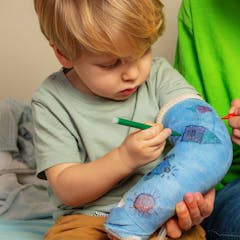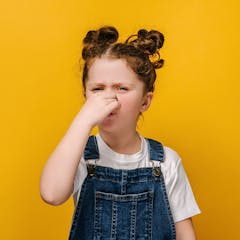
Articles on Child health
Displaying 1 - 20 of 283 articles

Beyond Australia, childhood food allergies seem to be on the rise around the world. Here’s where the research is up to.

Children can have big emotions and sometimes struggle to process them. Here’s what it means for a child to be ‘dysregulated’.

Has your child fractured a bone? A new report shows it’s the leading type of injury for kids. But the causes of injury change as children grow older and differ between boys and girls.

No parent wants to see their child suffer and untreated pain can have health consequences. But parents may have concerns about use of opioids for their child’s acute pain. Here are tips for safer use.

Just over half of Aboriginal and Torres Strait Islander children in out-of-home care live with a kinship carer. Targets aim to increase this proportion. But what is kinship care?

Since nutrition standards were strengthened in 2010, eating at school provides many students with healthier food than is available cheaply elsewhere. Plus, reducing stigma increases the number of kids getting fed.

Children are bearing the brunt of austerity. From obesity to infant mortality, child health is affected by sustained under-investment. What can be done to reverse the decline?

The Food Standards Agency advises that children under four should not be given these drinks.

Low awareness of how arthritis affects young people leaves thousands of children without appropriate support.

Chances are, your teenager has already seen online porn. How should you respond if you find out they are watching it? What conversations should you be having with young children to prepare them?

Children with DCD often avoid the tasks they struggle with, meaning their issues may become invisible.

For over 20 years, I have researched and treated children sleep problems. The research suggests changing sleep patterns over the summer break does not have to be a problem.

Looking after a baby during extreme heat events takes a little planning and a lot of patience. Here are some practical steps you can take.

Kian, age 6, has some interesting questions about farts that we’re probably all wondering about.

The impact of housing quality extends beyond health to education and subsequent economic outcomes, particularly for children.

Tooth decay in children is preventable. Here’s what to focus on.

Fatalities from gun homicides, suicides and accidents are all up for Americans ages 18 and under.

His teaching spoke practically but compassionately to the needs of the African child.

Being caught up in an emergency like a bushfire can make breastfeeding more challenging – but there are ways to continue.

Despite their small size, infants and children actually require about the same amount of iron as adults, to help them grow. Many aren’t getting enough.
